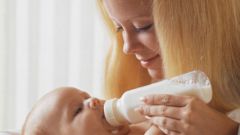What are nursing a newborn?
Nursing infants – observation program within the first month of life. The young mother is brewing a lot of questions on child care. The district doctor-the pediatrician or the practice nurse explain in detail how to properly swaddle your baby, to feed him, how to bathe and handle the umbilical wound. Also interviewed with new mum, which tell how to eat while breastfeeding.
The doctor during each visit, examines a newborn, so as not to miss any pathology. Necessarily examined umbilical wound, reflexes of the child and felt his tummy.
Another objective of patronage – the identification of conditions in which there is a child. Definitely draws attention to the cleanliness of the apartment, size of living space and number of rooms.
Who relies nursing surveillance? It can count everything. It does not depend on place of residence and the availability of medical insurance and is entirely free.
How often are nursing visits?
The first time the doctor comes in one of the first three days after discharge and maternity homes. If the baby is the firstborn, born late or early or has any congenital diseases, the pediatrician examines him on the day of discharge.
In the first ten days the pediatrician or visiting nurse has to come daily. They can come together, separately, or even on different days.
During the first visit, the doctor gets acquainted with conditions of life of the child and his parents. He also finds out the anxiety and concerns of the family related to the child and is interested in health mother's mental state.
Then the doctor finds out, how was the pregnancy – not lay whether the mother is on maintaining, if there was any toxicity. Interested in course delivery, namely: the child was born naturally or by caesarean section, how did you feel newborn. All this information is contained in the exchange card that the young mother receives upon discharge from the hospital.
Going pedigree baby. To gather information on the state of health of parents and other close relatives. This is done in order to determine the risk of hereditary diseases.
The next stage is the examination of the baby. It literally examined from head to toe – skin color, head shape, eye reaction to light, the location of the ears, the structure of the hard and soft palate, the shape of the thorax, abdomen and genital organs, the position of the hands and feet.
At the end of the visit, the doctor examines the Breasts of a mother and gives advice on feeding. More attention is paid to the hygienic care of the newborn.
The second and subsequent visits the doctor again examined the baby, to assess the development. Mom discusses possible problems of the younger child (vomiting, colic), and held a conversation about the prevention of rickets.
On the last visit date and time of admission, when parents themselves will need to bring the child to the children's clinic. In General, examinations of children under one year of age are held once a month in the so-called "toddlers' day (1 day a week when the doctor only accepts infants).


